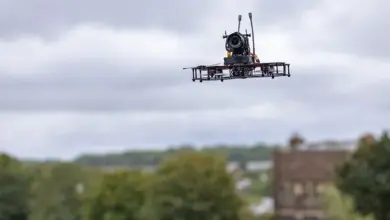
Virtual Reality (VR) and Augmented Reality (AR) technologies have evolved at a remarkable pace over the past few years, transforming from niche gadgets into powerful tools that reshape industries like gaming, healthcare, education, and more. Innovations in VR and AR headsets are at the heart of this transformation, offering users more immersive, realistic, and interactive experiences. This article explores the recent breakthroughs in VR and AR headsets, focusing on the key advancements driving their adoption and how they are revolutionizing multiple fields.
1. Higher Display Resolutions and Improved Optics
One of the most noticeable innovations in VR and AR headsets is the improvement in display quality. Early VR headsets were criticized for their “screen door effect,” where users could see the individual pixels, resulting in less immersive experiences. However, modern headsets like the Oculus Quest 2, HTC Vive Pro 2, and PlayStation VR 2 have addressed this issue by offering higher resolution displays. For instance, the HTC Vive Pro 2 features a 5K display, providing clearer, sharper visuals with reduced pixelation.
In addition to higher resolution, advancements in optics have made VR and AR experiences more comfortable and realistic. Headsets now use Fresnel lenses or custom optics to offer better field-of-view (FOV), which means users can see more of the virtual world without moving their heads as much. This broader FOV is particularly important for creating an immersive environment, whether in VR gaming, virtual tourism, or enterprise-level simulations.
2. Increased Comfort and Portability
Comfort is a critical factor in the widespread adoption of VR and AR headsets. In the past, many users experienced discomfort due to the bulkiness and weight of earlier models. However, manufacturers have made significant strides in making headsets lighter and more ergonomic. The Oculus Quest 2, for example, is much lighter than its predecessors, allowing for extended use without causing neck strain or discomfort.
Portability is another key innovation. Standalone headsets like the Oculus Quest series and HTC Vive Focus do not require a powerful PC or external sensors. These wireless devices are entirely self-contained, with built-in processing units and sensors, making them more convenient for users who want a plug-and-play experience. The freedom from cables allows for greater mobility in VR environments, which is essential for both consumer applications and professional use, such as training simulations and remote collaboration.
3. Improved Tracking and Controllers
Precise tracking is vital for creating an immersive VR experience, and recent innovations in this area have significantly enhanced user interaction with virtual environments. Inside-out tracking, which uses cameras built into the headset to track the user’s movements, has become the norm in modern VR headsets. This eliminates the need for external sensors, simplifying setup and increasing the range of movement.
Moreover, controllers have become more sophisticated, allowing for more intuitive and natural interactions. The Valve Index controllers, for example, feature individual finger tracking, enabling users to grab, throw, or manipulate objects in the virtual world with a level of precision that was previously impossible. Hand tracking technology is also advancing rapidly, with devices like the Meta Quest 2 offering support for hand gestures without the need for controllers at all. This allows for even more immersive experiences, where users can interact with the digital environment using only their hands.
4. Innovations in Augmented Reality (AR)
While VR headsets immerse users in a completely virtual world, AR headsets superimpose digital elements onto the real world. Innovations in AR headsets, such as Microsoft’s HoloLens 2 and Magic Leap, have made significant strides in enhancing user experience and broadening the use cases for the technology.
HoloLens 2, for example, has introduced spatial anchors and more advanced hand-tracking capabilities, allowing users to interact more naturally with holographic objects. These features are particularly valuable in industrial applications, such as remote maintenance and training, where workers can visualize complex machinery or systems in a real-world context. The medical field is also benefiting from AR innovations; surgeons can use AR headsets to view vital information or 3D scans overlaid on a patient during operations, enhancing precision and reducing risk.
Magic Leap has focused on creating lightweight AR headsets with a wide field of view, aiming to integrate digital content seamlessly into the user’s surroundings. Their innovative light field technology creates more realistic digital objects, enabling users to experience a more natural blend of real and virtual worlds. This technology has potential applications ranging from entertainment to education, where students can interact with 3D models of historical landmarks or complex scientific concepts.
5. Enhanced Software Ecosystems and Content Creation
A critical innovation in the VR and AR space is the growing software ecosystem that supports these technologies. Developers now have access to more powerful and flexible platforms for creating VR and AR content. Platforms like Unity and Unreal Engine offer developers tools to build immersive experiences with high-quality graphics, real-time rendering, and detailed physics engines.
Moreover, Meta’s Horizon Worlds and other social VR platforms allow users to create and share their own virtual worlds. This democratization of content creation is a major driving force behind the adoption of VR technology, as users are no longer limited to passively consuming content—they can actively shape the virtual environments they inhabit.
For AR, Apple’s ARKit and Google’s ARCore provide robust development frameworks that enable the creation of augmented reality applications for mobile devices. These platforms are pushing the boundaries of AR by leveraging the power of smartphones to deliver experiences that were once only possible with specialized headsets.
6. Foveated Rendering and Eye-Tracking Technology
One of the most revolutionary innovations in VR headsets is the implementation of foveated rendering and eye-tracking technology. Foveated rendering is a technique that focuses high-resolution graphics only on the area of the screen where the user is looking, while rendering the peripheral vision at a lower resolution. This optimization reduces the processing power required to deliver high-quality visuals, enabling smoother performance on less powerful hardware.
Eye-tracking technology further enhances the user experience by allowing the headset to respond to the user’s gaze. For example, a user could select an object or menu option simply by looking at it, eliminating the need for a traditional controller. Eye-tracking also opens up new possibilities for accessibility, enabling users with physical disabilities to interact with VR environments in ways that were previously impossible.
The combination of foveated rendering and eye-tracking is poised to become a standard feature in next-generation headsets, offering both improved performance and more immersive experiences.
7. 5G Integration and Cloud-Based VR/AR
Another major innovation that is set to transform VR and AR headsets is the integration of 5G technology. With the rollout of 5G networks, VR and AR headsets will be able to tap into faster, more reliable internet connections, enabling seamless streaming of high-quality content and real-time collaboration in virtual environments.
Cloud-based VR and AR are also emerging as a result of 5G technology. Instead of requiring powerful local hardware, future VR and AR headsets could offload much of the processing to cloud servers. This would allow for lighter, more affordable headsets that still deliver cutting-edge graphics and performance. Companies like NVIDIA and Google are already working on cloud-based solutions that could revolutionize how VR and AR content is delivered and experienced.
8. Health and Wellness Applications
One of the most exciting frontiers for VR and AR innovations is in the realm of health and wellness. Both technologies are being used to develop applications for mental health therapy, physical rehabilitation, and pain management.
VR headsets are being used in exposure therapy for patients with anxiety, PTSD, or phobias, allowing them to confront their fears in a controlled, virtual environment. Pain management applications, such as VR distractions for patients undergoing medical procedures, have shown promising results in reducing perceived pain and discomfort.
AR headsets are finding their place in physical therapy, where patients can follow guided exercises in augmented reality, receiving real-time feedback on their form and progress. These innovations are helping bridge the gap between medical professionals and patients, offering more personalized and accessible healthcare solutions.




